Invented by Stephen J. Brown, Robert Bosch Healthcare Systems Inc
Health management process control systems are designed to streamline healthcare processes, improve patient outcomes, and reduce costs. These systems are used to manage patient data, track medical procedures, and ensure compliance with regulations and standards.
The market for health management process control systems is driven by several factors, including the increasing demand for healthcare services, the need for efficient and effective management of healthcare processes, and the growing adoption of digital technologies in healthcare.
One of the key trends in the market is the increasing adoption of cloud-based health management process control systems. Cloud-based systems offer several advantages over traditional on-premise systems, including lower costs, greater scalability, and improved accessibility.
Another trend in the market is the growing use of artificial intelligence (AI) and machine learning (ML) in health management process control systems. AI and ML are being used to analyze patient data, identify patterns, and make predictions about patient outcomes. This can help healthcare providers to make more informed decisions and improve patient outcomes.
The market for health management process control systems is highly competitive, with several major players competing for market share. Some of the key players in the market include Cerner Corporation, McKesson Corporation, Allscripts Healthcare Solutions, Inc., and Epic Systems Corporation.
In conclusion, the market for health management process control systems is expected to continue to grow in the coming years, driven by the increasing demand for healthcare services and the need for efficient and effective management of healthcare processes. The adoption of cloud-based systems and the use of AI and ML are expected to be key trends in the market, and competition among major players is likely to remain intense.
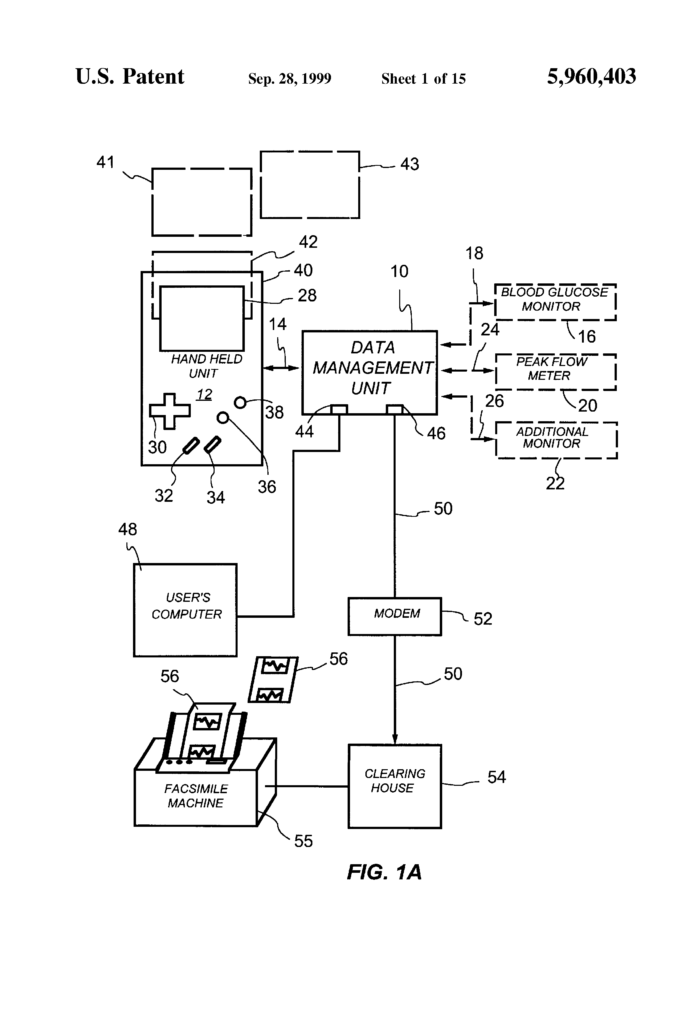
The Robert Bosch Healthcare Systems Inc invention works as follows
A system and method that remotely monitors a patient and trains the patient to follow a treatment plan for a particular health condition. The patient computing device collects data about the patient’s health and sends it to a clinician computer over a communication network. The clinician computer analyzes the data to determine the patient’s educational needs for treatment. A program that corresponds to the patient’s educational needs is chosen and embedded in an electronic message. By selecting the embedded pointer from the electronic message, the patient’s educational program is launched on their computer. The educational program is used by the patient to collect data about their health and send it to the clinician for analysis. The clinician can monitor patient progress and train patient to follow the treatment plan with this constant feedback loop.
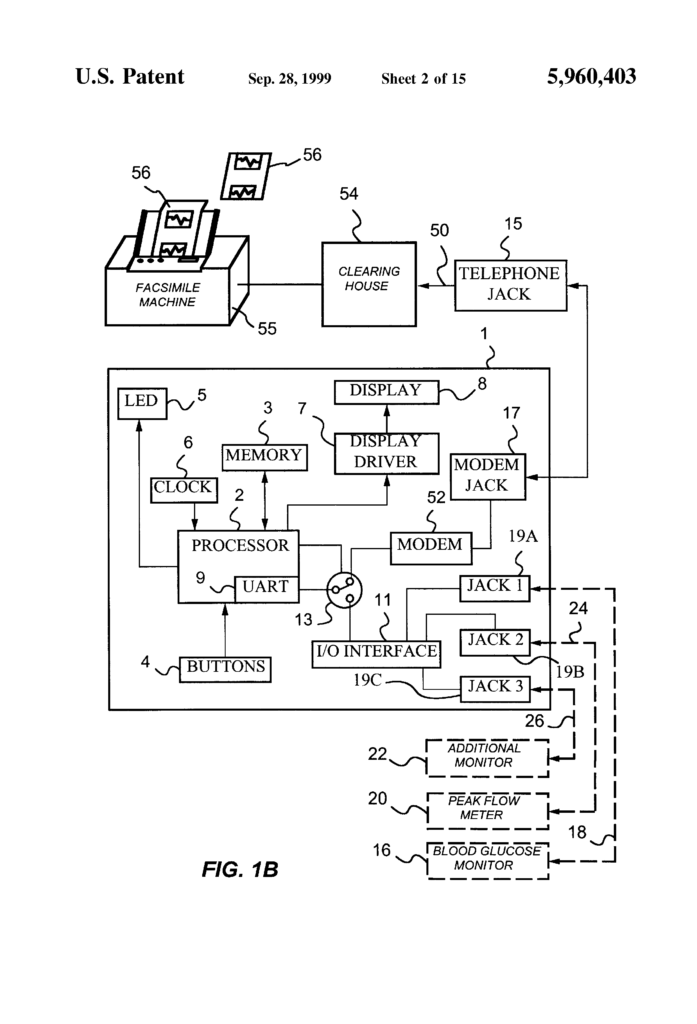
Background for Health management process control system
1. “1.
The invention is in the field of health management and relates specifically to a system and method to remotely monitor a patient and train the patient to follow a treatment plan for an illness.
2. “2.
In recent years, a growing number of healthcare providers have started outpatient or home-based healthcare programs for their patients. These home healthcare programs can be especially beneficial for patients with chronic illnesses such as asthma and diabetes who need to treat their disease on a daily basis. The current limitations of home healthcare programs are the inability of healthcare providers to monitor, assess and train patients to follow treatment plans.
Many systems can be used to remotely monitor a patient’s compliance to a medication plan. U.S. Pat. No. Kirk et al. received 5,390.238. On February 14, 1995, a home healthcare system and communication support system was disclosed to Kirk et al. The system contains a health support unit that is located at the patient’s house for monitoring and supporting them. The remote monitoring terminal can be connected to the health support unit for remote monitoring. The unit also includes a medication controller to monitor the patient’s compliance with medicine and a communication module that allows for communications with the operator at the monitoring terminal. To allow access to patient’s medication compliance data, the health support unit is connected to the healthcare provider.
U.S. Pat. describes a similar system to monitor adherence to medicine by patients. No. No. 5,016,172 was issued to Dessertine May 14, 1991. This system also includes an automatic medicine compliance monitor device that measures the patient’s actual medication consumption. The patient computing device connects to the monitoring device, which records the patient’s medication consumption. A remote monitoring terminal is connected to the patient computing device to display the patient’s medication compliance to a healthcare provider. Optionally, the system can include a second monitoring device to monitor the patient’s physical condition, such as heart rate and blood pressure.
The systems described by Kirk & Dessertine can monitor a patient’s health and ensure that they are taking their prescribed medications. However, there is no way to make sure that the patient follows a treatment plan. These systems do not provide guidelines to patients for managing a particular health condition. These systems are designed to monitor the patient remotely.
Numerous systems have been created to prompt a patient to take the prescribed medication and remotely monitor their health. U.S. Pat. No. Kaish received No. 5,501,231 on March. 26 1996 describes a hand-held, patient-operated system that records peak flow rates and tests for asthma patients. The system has a peak flowmeter to measure the patient’s peak flow rates, and an alarm to prompt the patient for a prescribed medication dose. The patient uses the system to record his or her peak flow rates for a set period of time. This is usually between 15 days and six months. After that, the doctor will return the system to him/her to recover the peak flow data. The doctor can optionally reprogram it with new alarm times or prescribed medication doses.
Kaish’s system has the advantage that it prompts patients to take their medication. However, it does not have any way to train them to follow the prompts. The system only gives preprogrammed instructions for medicine to patients without explaining why or how to use them. The system is unable to identify problems that the patient may be having in following a treatment plan or show the patient how to fix them. This could result in the patient not being able to follow the prescribed treatment plan. It can severely limit the effectiveness of the home healthcare system. Kaish’s system does not allow for continuous feedback between doctor and patient to adjust the treatment plan.
U.S. Pat. discloses “Another system to remotely monitor a patient and prompt a patient take a prescribed medication dose.” No. No. 4,731,726 was issued to Allen in Mar. 15, 1988. Allen describes a diabetes management program that includes a blood glucose monitor for measuring blood glucose levels of patients and sending them to physicians. A user interface allows the patient to enter data about their medication use, exercise routine, and diet. The system uses the data to calculate the recommended insulin dose using an algorithm that has been prescribed by a physician.
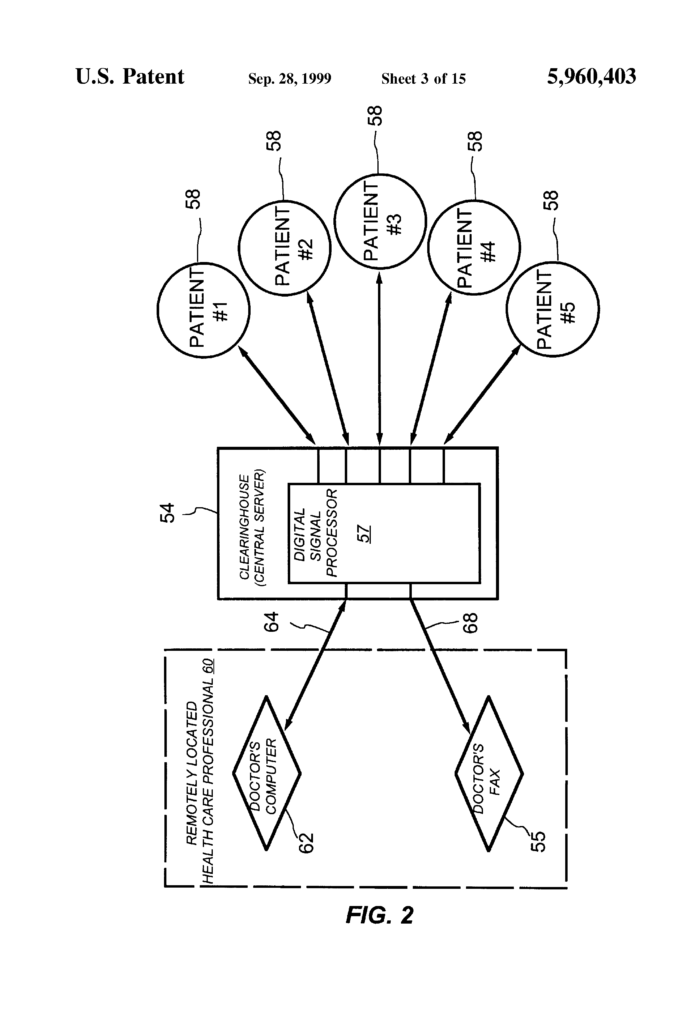
Allen’s system has the same problem as Kaish’s in that it fails to teach the patient how to follow the prescribed treatment plan. The system only issues dosage instructions that are based on a preprogrammed algorithm. It does not identify any diabetes problems or teach the patient how to fix them. This system’s effectiveness in diabetes management is also limited.
U.S. Pat. reveals a similar system for managing diabetes at home. No. No. 5,109,974 was issued to Beckers May 28, 1991. The system contains a physician computer that can be used to develop a diabetes treatment program. It also has a patient recorder with an interface for exchanging information with the doctor computer. The recorder includes a blood glucose strip to measure the patient’s glucose levels. It also has an interface that allows the user to enter data about the patient’s insulin use, exercise routines and dietary intake. The recorder uses the patient data and the therapy guidelines downloaded from the doctor computer to calculate and display to the patient the recommended insulin dosage, exercise program, and diet. The physician computer also sends the recorder new therapy guidelines that are based on the patient’s data.
Beckers’ diabetes management program has the advantage that it can adjust a patient?s therapy plan based on remote monitoring. However, it has the same drawback as previous systems because it fails to teach the patient how the treatment plan should be followed. Becker’s system does not have a way to identify problems in the diabetes program and teach the patient how they can be fixed. Becker’s system also fails to train the patient in diabetes treatment.
OBJECTS & ADVANTAGES OF AN INVENTION
In light of all the above, the invention provides a system and method to remotely monitor a patient and to train the patient to follow a treatment plan for a particular health condition. Another object of the invention is to teach a patient how to resolve a particular problem. Another object of the invention is to provide a system that permits continuous feedback between a patient and a clinician for ongoing adjustment to a treatment plan.
The invention is a useful and new system for monitoring healthcare and patient training. It uses a small, microprocessor-based unit (or a personal computer) that can be connected to the resources and databases of the clinician.
These and other advantages will be more obvious after you have read the description and seen the accompanying drawings.
The invention provides a method and system for remotely monitoring a patient, and training the patient to follow a treatment plan for a particular health condition. The system also includes a patient computing device such as a personal computer, or a network terminal for collecting data related to the health condition. The preferred embodiment includes data that measures a health characteristic, such as blood glucose for diabetic patients or peak flow measurements in asthmatic patients. In the preferred embodiment, data also includes psychological characteristics of the health condition such as patient knowledge, comprehension, and attitude in treating the condition.
The system also includes a clinician computer with a data analysis program that analyzes the data to determine the educational needs of the patient. A message program such as an electronic mail program is also available on the clinician computer to compose an electronic message for the patient. An electronic message includes a pointer to an educational program that corresponds to the patient’s educational needs. The message contains a pointer, which is an embedded prompt. The pointer is a prompt embedded in the message that the patient can select to load and execute the educational program instructions. The communication network links the clinician’s computer with the patient computing device, and transmits data and electronic messages between them.
The preferred method for using the system is to enter data about the patient’s health into the patient computing devices and then transmit the data to the clinician computer over the communication network. Further steps include analyzing the data in the clinician computer and selecting the appropriate educational program. An electronic message is sent to the patient that contains a pointer to the chosen educational program. The electronic message is sent over the communication network, from the clinician’s computer to the patient’s computing device.
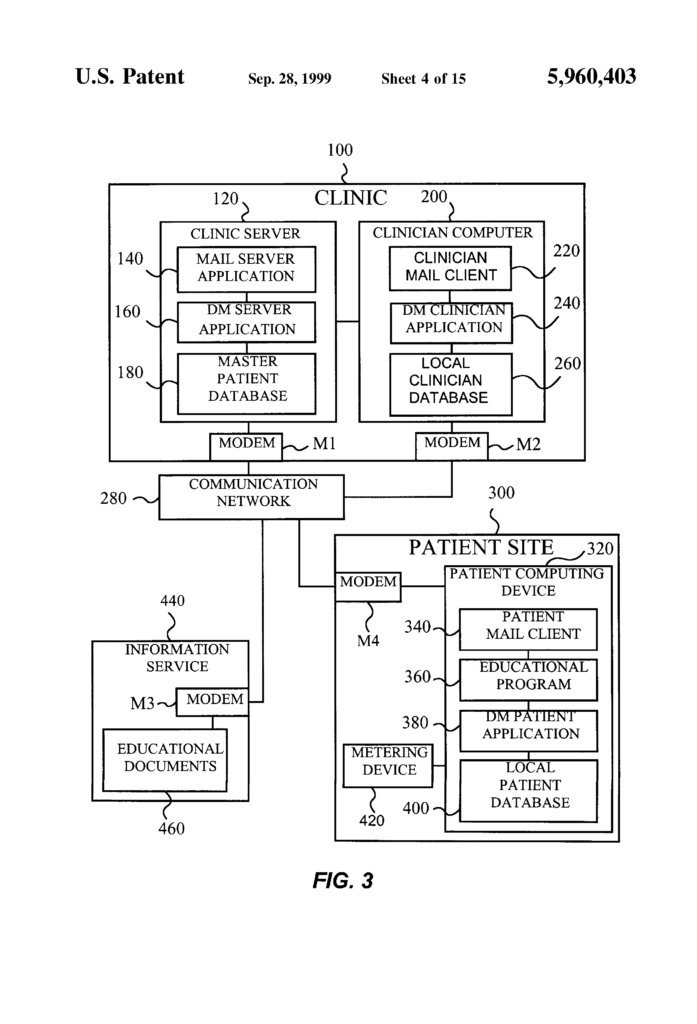
The patient can select the embedded pointer from the electronic message to start the educational program on their patient computing device. The educational program is used by the patient to collect data about their health and send it to the clinician for analysis. The clinician can monitor patient progress and train patient to follow the treatment plan with this continuous feedback loop.
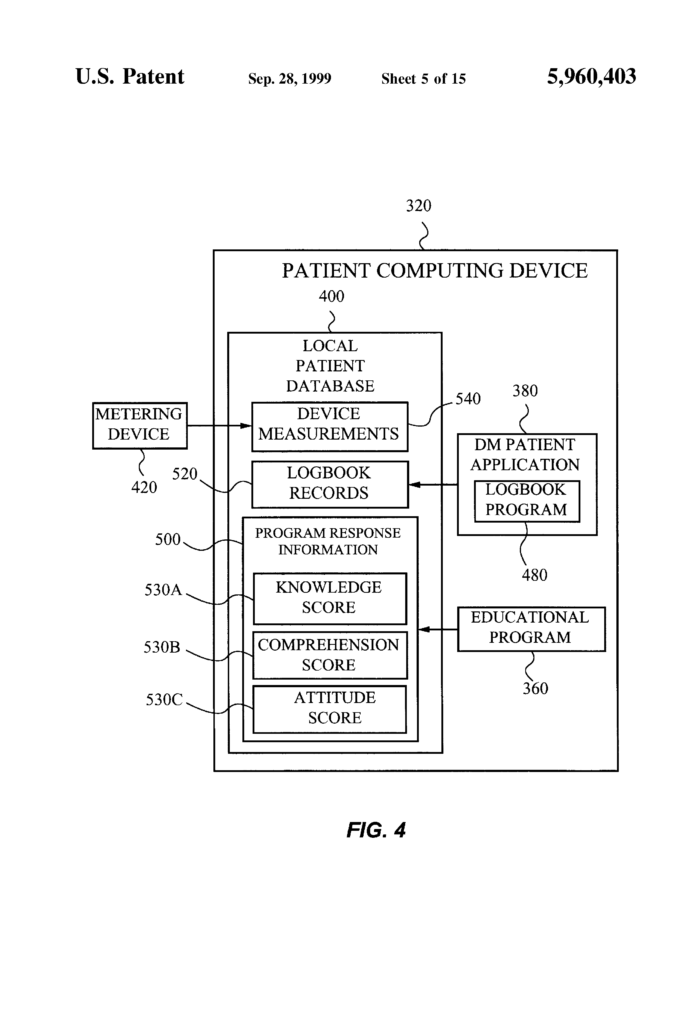
Click here to view the patent on Google Patents.
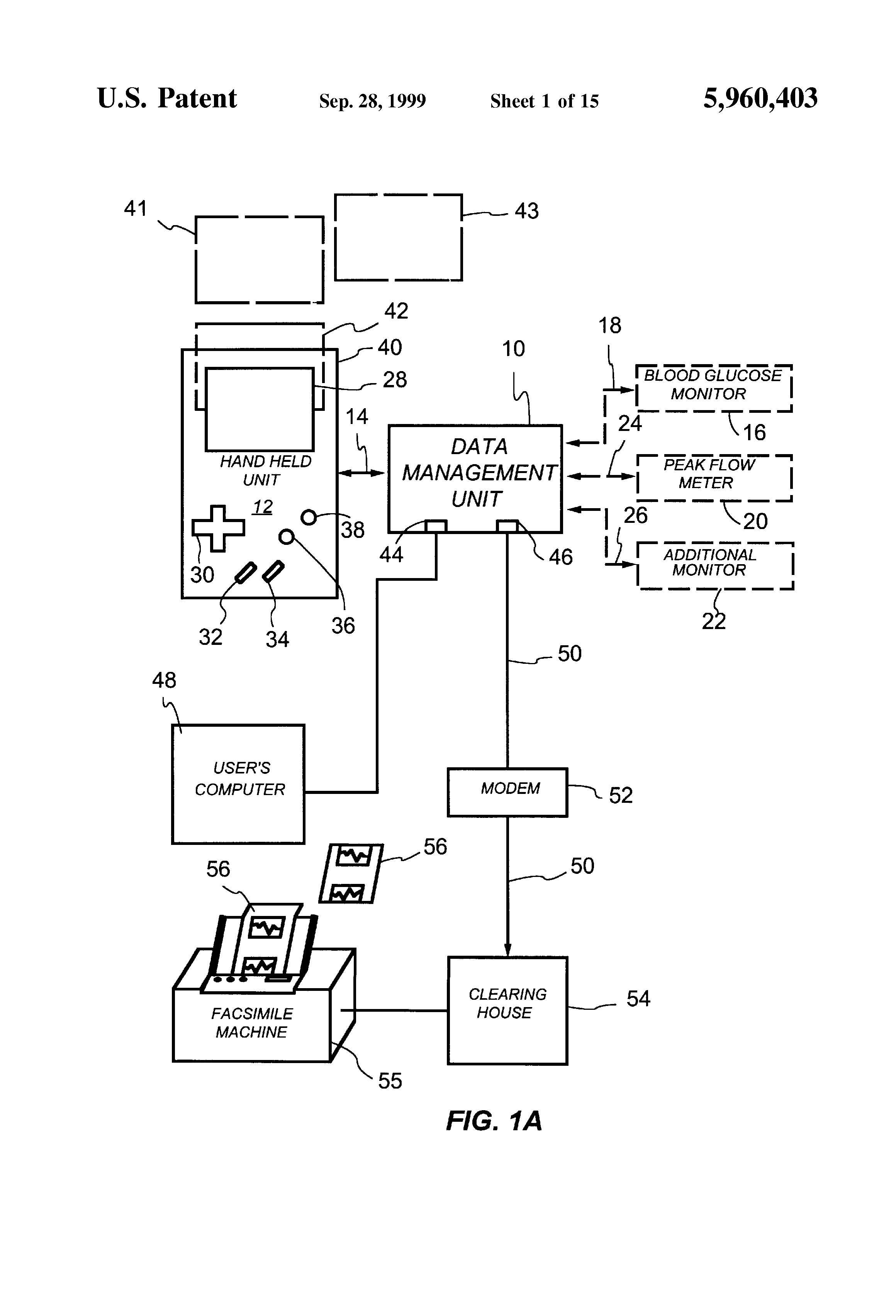
Leave a Reply